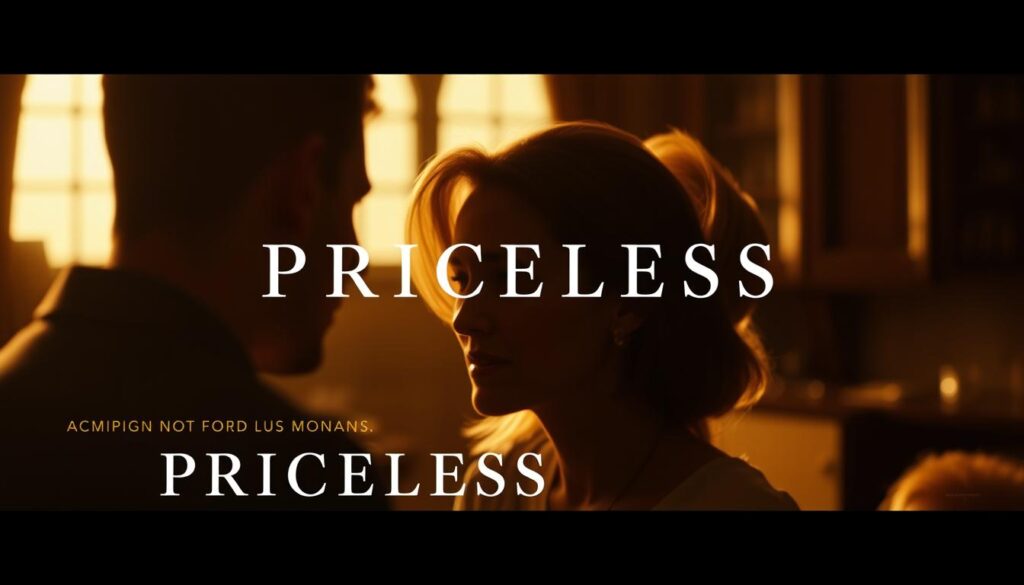
Did you know that Mastercard’s iconic “Priceless” campaign has been resonating with consumers for over 25 years? Launched in 1997, this campaign has grown from a simple TV ad into a global brand platform recognized in over 100 countries. It’s a testament to how a single idea can evolve into a cultural phenomenon, creating lasting emotional connections with audiences worldwide.
The campaign’s initial goal was to shift the focus from transactional messaging to the experiences money can’t buy. The first ad, featuring a father and son at a baseball game, highlighted the priceless moments in life. This approach not only differentiated Mastercard from competitors but also laid the groundwork for a long-term brand strategy that continues to inspire marketers today.
By emphasizing storytelling and emotional engagement, the “Priceless” campaign has become a benchmark in marketing. It’s a powerful reminder that, in a world driven by transactions, it’s the memorable experiences that truly leave a lasting impact. Discover how this campaign transformed the way brands connect with consumers and why it remains a timeless example of effective marketing.
Learn more about how Mastercard’s innovative strategies have shaped the market by visiting our services page.
The Origins of Mastercard’s “Priceless” Campaign
In the late 1990s, the credit card market was highly competitive, with major players like Visa and American Express dominating the scene. Mastercard faced significant challenges in differentiating itself in this saturated market.
Early Challenges in the Credit Card Market
At the time, the credit card industry was experiencing rapid changes. The emergence of the internet and shifting media landscapes required brands to rethink their strategies. Mastercard needed a bold approach to stand out and capture consumer attention.
The competition was fierce, with Visa and American Express already well-established. Mastercard’s challenge was to create a brand identity that resonated emotionally with consumers, moving beyond mere transactional messaging.
The Creative Spark Behind the Concept
Enter Joyce King Thomas and the creative team at McCann-Erickson. Their groundbreaking idea focused on the concept of “priceless moments,” emphasizing experiences over material goods. This approach was revolutionary, as it tapped into what consumers truly valued.
Research revealed that consumers often cherished memories and experiences more than physical purchases. This insight became the cornerstone of the campaign, leading to the creation of the now-iconic ads, such as the one featuring a father and son at a baseball game.
| Competitor | Market Position | Key Strategy |
|---|---|---|
| Visa | Market Leader | Transactional Benefits |
| American Express | Premium Segment | Exclusivity and Rewards |
| Mastercard | Emotional Engagement | Priceless Moments |
“The idea was simple yet powerful: focus on the things money can’t buy.”
This strategic shift not only set Mastercard apart but also laid the foundation for a long-term brand platform that continues to inspire marketers today. By understanding consumer values and leveraging emotional storytelling, Mastercard created a campaign that would resonate globally.
For more insights into effective marketing strategies, visit our e-commerce SEO page or explore the history of the Priceless campaign.
Key Elements of the Priceless Campaign Strategy
Mastercard’s Priceless campaign stands out due to its well-crafted strategy, blending deep consumer insights with innovative storytelling. This approach not only resonated emotionally with audiences but also set a new standard in advertising.
Consumer Insight and Emotional Connection
The campaign’s foundation lies in understanding that consumers value experiences over material possessions. Mastercard’s ads, such as the iconic baseball game scenario, highlight how a credit card can enable these meaningful moments. This emotional connection is central to the campaign’s success, making it relatable and enduring.

Repetition-Break Plot Structure in Storytelling
The storytelling technique used is a repetition-break structure, common in comedy and fairy tales. Ads list various prices, building tension, before ending with a priceless moment. This creates surprise and emotional engagement, making the ads memorable and impactful.
Learn more about Mastercard’s innovative strategies on their Priceless campaign page.
Impact and Legacy: Shaping a Global Brand
Mastercard’s “Priceless” campaign has left an indelible mark on global advertising, transcending traditional marketing to become a cultural phenomenon. Over the years, it has not only resonated with consumers but also influenced popular culture, with memes and parodies appearing in shows like Saturday Night Live and The Simpsons.

| Competitor | Market Position | Key Strategy |
|---|---|---|
| Visa | Market Leader | Transactional Benefits |
| American Express | Premium Segment | Exclusivity and Rewards |
| Mastercard | Emotional Engagement | Priceless Moments |
“The campaign’s ability to connect emotionally with consumers has been its greatest strength.”
The campaign’s evolution over the years has allowed it to adapt to changing consumer behaviors and global markets, ensuring its long-term success. Its influence extends beyond advertising, shaping branding strategies worldwide. For more insights, visit our resources page.
Priceless Campaign: A Detailed Case Study
Mastercard’s Priceless campaign is a prime example of how strategic planning and creative execution can redefine a brand’s position in a competitive market. Launched in 1997, this campaign transformed Mastercard from a credit card company into a global brand synonymous with emotional connections and memorable experiences.
Strategy, Execution, and Team Dynamics
The campaign’s success began with a clear strategy to shift focus from transactions to experiences. McCann-Erickson’s creative team, led by Joyce King Thomas, crafted a narrative that emphasized the value of moments over material goods. This approach was revolutionary, as it tapped into consumer emotions rather than just their wallets.
The execution was seamless, with ads like the iconic baseball game scenario becoming cultural landmarks. The team’s collaborative dynamics ensured that every element, from storytelling to visuals, aligned with the campaign’s core message.
Positioning Against Competitors and Market Impact
| Brand | Positioning | Key Strategy |
|---|---|---|
| Mastercard | Emotional Engagement | Priceless Moments |
| Visa | Market Leader | Transactional Benefits |
| American Express | Premium Segment | Exclusivity and Rewards |
By focusing on emotional engagement, Mastercard set itself apart from competitors like Visa and American Express. This unique positioning not only boosted brand awareness but also created a loyal customer base. The campaign’s impact extended beyond marketing, influencing popular culture and shaping branding strategies worldwide.

Learn more about the evolution of digital marketing strategies on our digital marketing page.
Conclusion
Over the past 25 years, Mastercard’s iconic campaign has redefined how brands connect with consumers. By focusing on emotional experiences rather than transactions, it created a new way to measure value. This approach not only set Mastercard apart from competitors like Visa and American Express but also inspired a global movement in marketing.
The campaign’s success lies in its strategic innovation and creative storytelling. It shows how effective marketing and team collaboration can build a lasting brand. These principles continue to inspire marketers, offering a blueprint for creating campaigns that resonate deeply with audiences. Reflect on how these strategies can elevate your own marketing efforts, ensuring a lasting impact on your consumers.

 Mastercard’s “Priceless” Campaign: Creating Emotional Connections with Priceless Moments
Mastercard’s “Priceless” Campaign: Creating Emotional Connections with Priceless Moments
0 Comment